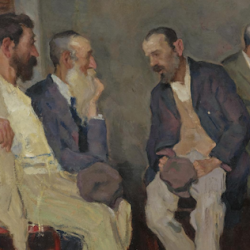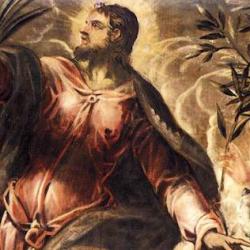Donald Macleod’s Christ Crucified is largely a defense of a traditional Protestant understanding of penal substitutionary atonement. As is typical for Macleod, though, there are surprises along the way.
This for instance: While “the unity of the divine Trinity remains unbroken throughout the passion,” it’s still the case that “the very fact of the trinitarian unity has profound implications for the traditional Christian doctrine of divine impassibility. If it is true at the human level that where one member of the church suffers all other members suffer with her, must the same not be true of the Trinity? The Son, we remember, is one and the same in substance . . . with the Father. ‘They’ are not only generically identical, but numerically one. It is the one only and eternal God who is enfleshed in Jesus . . . and though the Father is not the divine person who suffers on the cross, he is one with the sufferer, and must therefore suffer with him, though in his own way” (50).
The perichoretic union of the Persons comes into play too: “Not only are God the Father and God the Son one and the same in substance and being, but they dwell in and around each other. The Father is in the Son and the Son in the Father. . . . The trinitarian persons are not three separate gods. On the contrary, where the One is, the Three are. The Three, then, are at Calvary, suffering not only from the sin of the world, but suffering for it. The Son’s passion cannot be external to the Father and the Holy Spirit. They are in it, as they embrace and include the Son. The pain of the cross is the pain of the triune God” (50).













